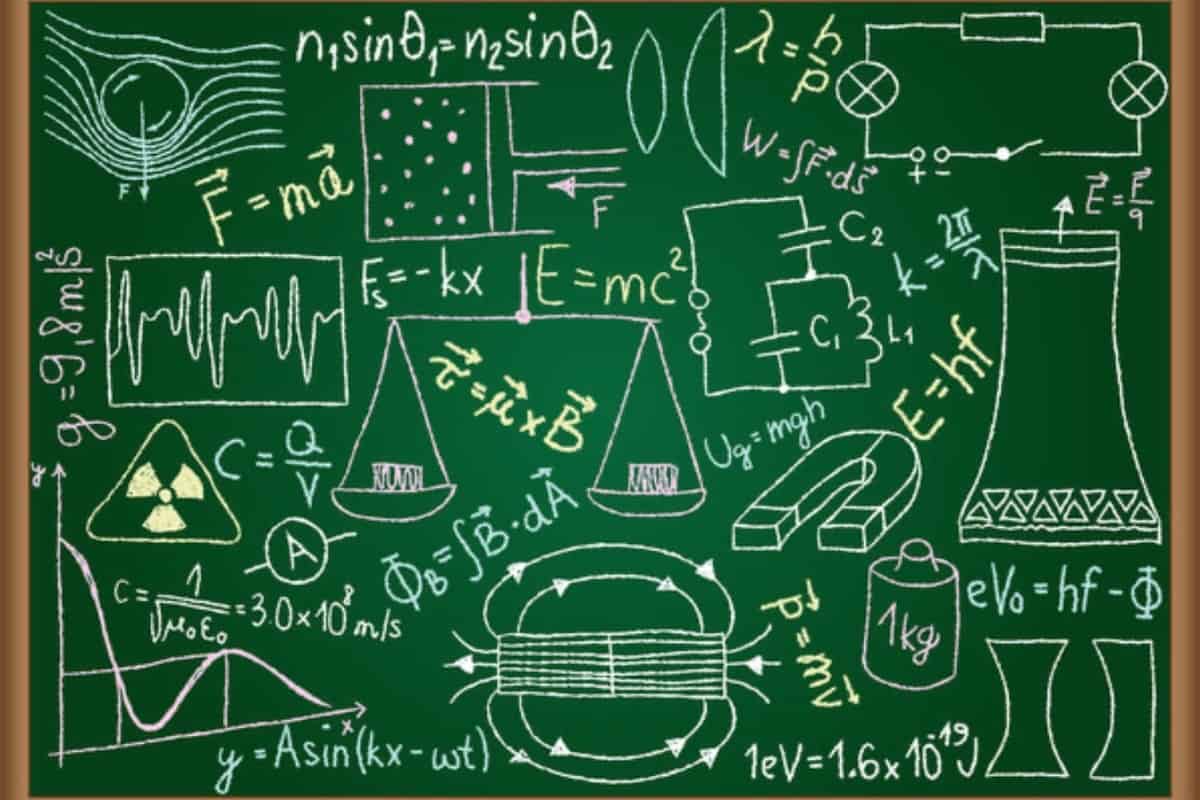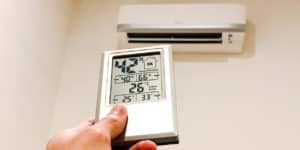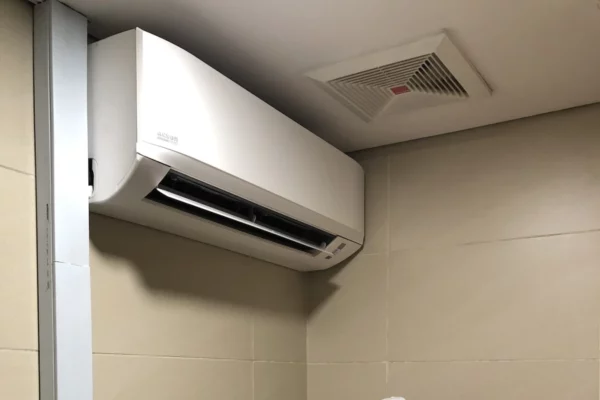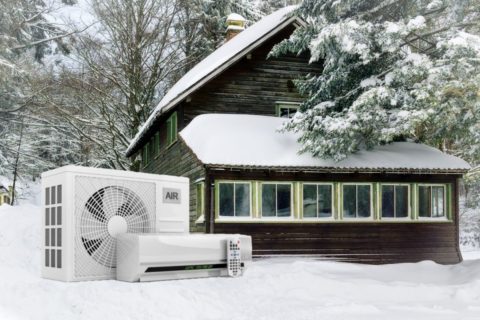Air Conditioning Theory | Physics | Fundamentals | Principles
The theory behind air conditioning is very important for students and engineers to understand the physics that allows air conditioning to happen. To fully explain what is air conditioning, I did extensive research on the theory, fundamentals and principles of air conditioning.
Most resources on the internet do not explain the theory and physics of air conditioning. If you want to know the fundamental truth of air conditioning, not only that you need to know the working principle of an air conditioner, but you also need to know why air conditioners work in that way.
For you to better understand the holy grail of air conditioning, I will be arranging information in the order which I think the best for your brain. Multiple aspects of air conditioning will be answered here.
What is the Most Common Type of Air Conditioner?
There are many different types of air conditioners in the world. To better understand air conditioning theory, we need to focus on the most common type of air conditioner used around the world.
According to IEA’s research, split air conditioners accounted for about 77% of all air conditioners used in the world as of the year 2016. Hence, we’ll be discussing air conditioning theory based on split air conditioners.

Split air conditioners can be found in homes and buildings such as universities, schools, hotels and retail stores. Before we dive deep into the theory and physics behind air conditioning, let us first take a look at how the split air conditioners work.
How Split Air Conditioners Work?
A split air conditioner has one indoor unit and one outdoor unit. The indoor unit delivers cold air while the outdoor unit produces hot air. Both units are connected by a set of insulated copper tubes and cables.
When we feel hot in our room, we use a remote controller to turn on the air conditioner. The remote control draws energy from the batteries and sends infrared signals to the air conditioner indoor unit thereby commanding it to operate.
Both the remote controller and the air conditioner indoor unit have an electrical board called the printed circuit board. The board has many electronic components soldered onto it which enables air conditioning engineers to program it during the production of the air conditioner.
Hence, both the remote controller and the air conditioner can communicate and operate based on your input, whether it is turning on the air conditioner, changing the temperature setting or switching the operation mode.
Upon the air conditioner indoor unit is turned on, it immediately sends a signal to the connected air conditioner outdoor unit where it also has a programmed printed circuit board that controls its operation.
Upon the air conditioner outdoor unit is instructed to operate, it will run its fan first and then, run its compressor. When the compressor finally operates, it compresses the refrigerant inside the copper tubes of the air conditioner outdoor unit and pushes the refrigerant to the condenser coil.
Afterward, the refrigerant travels to the air conditioner indoor unit, gets expanded and flows through the evaporator coil before circulating back to the air conditioner outdoor unit and completing the cycle.
Now, from the air conditioner is turned on until you feel the cold air coming out of the air conditioner indoor unit, there are 4 major components involved in the process as below:
- Compressor
- Condenser
- Expansion Valve
- Evaporator
These 4 components are the most basic components of an air conditioner. Every air conditioner operates by these 4 components. With the refrigerant, they all together form a thermodynamic cycle called the vapor compression refrigeration cycle.
There are many resources on the internet that explain the details of the vapor compression refrigeration cycle. So, we will be discussing why we need to use refrigerants for air conditioning in the following section.
In the meantime, I would like to inform you that you can learn quicker by getting my HVAC Begin (eBook) if you’re a beginner. But, if you have a year or two of experience, then I would suggest you consider my HVAC Basics (eBook). Nonetheless, I encourage you enroll in my HVAC Beginner Course: 10 Days to Become Competent in HVAC if you want to equipped yourself with a complete set of basic HVAC skills.
HVAC Beginner Course
Learn the most basics and foundational HVAC skills including cooling capacity calculation, equipment selection, duct sizing, pipe sizing, exhaust fan sizing, controls, electrical and more.
Why Refrigerants are Used for Air Conditioning?
In order to reduce the temperature in our room, physics said that we must remove heat energy from the room. This is governed by the first and second laws of thermodynamics.
If you are not familiar with thermodynamics, the first law of thermodynamics states that energy cannot be created or destroyed, it can only be transferred.
So, our split air conditioner did not create cold air. Instead, it used a refrigerant to absorb the heat energy from the air within the room, resulting in cold air being produced.
Notice that the refrigerant absorbs heat energy but does not release cold energy. So, why the one that moves is heat?
The second law of thermodynamics states that energy always flows from a warmer body to a colder body. Therefore, air conditioners are always absorbing heat energy rather than releasing cold energy.
Technically, no cold air is being produced by our split air conditioner. Instead, the air simply losses energy when it passes through the air conditioner indoor unit, resulting in the air becoming colder than the rest of the air inside the room.
The laws of thermodynamics are the fundamental truth of air conditioning as well as how the universe works. We can’t alter or change physics.
Now that we know heat must be removed from the room to cool. So, what is the most effective way to do that?
Over the year, air conditioning engineers from around the world had developed and agreed that refrigerants are the best substances to be used as the medium for heat transfer.
Refrigerants are engineered products. They are researched and developed chemical mixtures that aimed to transfer heat energy as efficiently as possible while maintaining low cost and low environmental impact.
We certainly can use other substances such as water to transfer heat. But, they are not as effective as refrigerants.
So, all air conditioners are filled with an appropriate amount of refrigerant. The refrigerant will circulate through the air conditioner indoor and outdoor unit as well as the 4 major components during operation.
For split air conditioners, the best refrigerant is R32 as of now. It has the best properties for air conditioning. Besides, it is harmless to humans and safe to use. So, most split air conditioners are using the R32 refrigerant.
Now, let’s discuss how refrigerants can help with air conditioning.
How Refrigerants Work in Air Conditioning?
The refrigerant of every air conditioner has a design working temperature and pressure. This temperature and pressure are determined by the thermal comfort of the human body.
Generally, people feel comfortable when the temperature is around 24°C and the relative humidity is around 55%. So, the goal of air conditioners is to bring the room temperature and humidity down to the comfort level and maintain it for as long as necessary.
Air conditioning engineers had done many research and experiments on how to transfer the heat energy from the air to the air conditioner indoor unit. As of now, a finned-tube heat exchanger is the best component to do that.
Inside the air conditioner indoor unit, there is a finned-tube heat exchanger. The heat exchanger has a stretch of copper tubes covered with tightly-packed aluminium fins. The R32 refrigerant will be flowing inside the copper tube during operation.
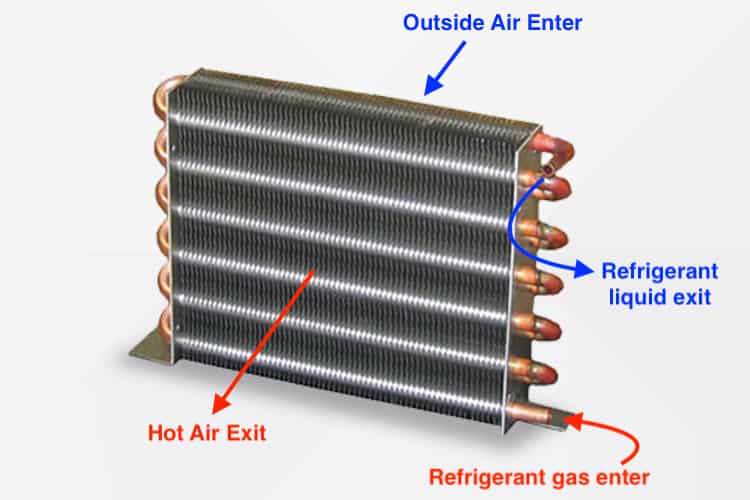
The aluminium fins of the heat exchanger are used to enhance the effectiveness of the heat transfer between the air and the R32 refrigerant. Currently, the average heat transfer rate is about 5°C, meaning if the air temperature is 28°C before passing through the finned-tube heat exchanger, the air temperature will reduce to 23°C after passing through the heat exchanger.
Whenever the air passed through the heat exchanger, it releases some heat to the refrigerant and the air reduces its temperature by 5°C. By repeating the cycle, the room temperature will eventually go down to 24°C.
Noticed that the air temperature after passing through the heat exchanger is lower than 24°C. So, will it makes the room temperature lower than 24°C? The answer is no.
A typical air conditioner should be supplying air at a temperature of 14°C in order to achieve 24°C. In other words, air conditioners are typically supplying about 10°C lower than the set temperature.
So, if we need to reach 24°C, we need the R32 refrigerant to be at least 9°C since the supply air temperature should be 14°C and the heat transfer rate is about 5°C.
Now, in order to bring the refrigerant temperature down to 9°C, we need the 4 major components that make the refrigeration cycle. So, let’s see how the refrigeration cycle works.
What is Refrigeration Cycle?
The refrigeration cycle starts with the compressor located inside the air conditioner outdoor unit. The compressor pressurizes the R32 refrigerant to about 363 psi which the temperature also rises to 42°C since Gas Law states that temperature is directly proportional to pressure.
On a side note, the pressure and temperature relationship of refrigerants was figured out and tabulated. It is called the PT chart. For R32 refrigerant, it is called R32 PT chart or PT chart for R32 refrigerant.
Then, the hot refrigerant gets pushed by the compressor through the finned-tube heat exchanger of the air conditioner outdoor unit. Here, the outdoor unit needs to release the heat energy stored within the refrigerant in order to for it to have the capacity to absorb heat later in the indoor unit.
So, air conditioner outdoor units always have a fan that draws the ambient air through their heat exchanger.
Similarly, the heat transfer rate is also about 5°C. Thus, the air coming out of the outdoor unit can be around 37°C, given that the ambient air temperature is lower than 37°C. Even in hot countries like Malaysia and Singapore, the ambient air temperature is often around 30°C.
However, during the process, the temperature and pressure of the R32 refrigerant do not change because phase change happens. The refrigerant changes from vapor form to liquid form by releasing the heat energy to the ambient air.
After that, the refrigerant travels to the air conditioner indoor unit where it meets an expansion valve. Expansion valves are metering devices. They can control the amount of refrigerant passing through them.
As the name suggests, the expansion valve releases the pressure of the refrigerant by spreading it out like how you use your hair spray. Hence, the refrigerant quickly drops in pressure, making its temperature drop to 9°C.
Similarly, the cold refrigerant passes through the finned-tube heat exchanger of the air conditioner indoor unit. Meanwhile, it absorbs heat from the air and changes its phase from liquid back to vapor.
Finally, the gas refrigerant travels back to the compressor and the cycle repeats.
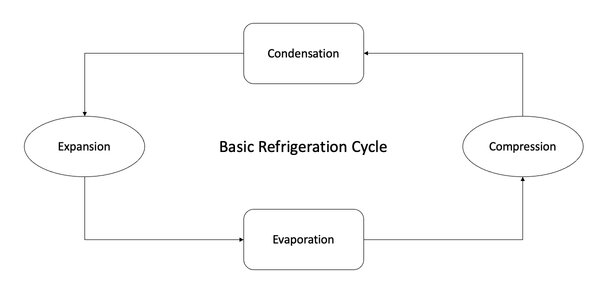
By controlling the compressor speed and throttling the expansion valve, we can control the pressure and thus the temperature of the refrigerant so that it meets our requirements.
However, we can’t just make the refrigerant as cold as possible because we need to prolong the air conditioning process so that sufficient time is allowed for dehumidification.
What is Dehumidification in Air Conditioning?
Remember that we feel comfortable at 24°C and 55% relative humidity. In hot countries like Malaysia and Singapore, the average humidity can be around 80%. So, air conditioners need to bring that down to 55%.
In order to remove the moisture in the air, air conditioners use the process called condensation. Essentially, the air that passes through the cold heat exchanger inside the air conditioner indoor unit condenses from water vapor to liquid water.
That’s why water will leak out from air conditioners that are not installed properly.
Air conditioning engineers had figured out that the heat exchanger needs to be at a certain size and sufficient time must be allowed in order for the heat exchanger to remove enough moisture from the air so that the humidity drops to 55%.
Therefore, the refrigerant cannot be too cold or too hot, the heat exchanger cannot be too small or too big and the airflow cannot be too much or too great. Everything must work within a certain range for proper air conditioning.
Conclusion
The above is the theory and fundamentals of air conditioning. As you can see, air conditioning involves many principles and physics laws. Properties of refrigerants and thermal comfort are also included in air conditioning.
Once we are done with the basics of air conditioning, we can further go into the optimization of air conditioners such as cost reduction, design for practicality, simplifying the manufacturing process and reducing the impact on the environment.
Lastly, consider my HVAC Begin (eBook) if you’re a beginner and you want to have a foundational knowledge in HVAC. But, if you have a year or two of experience, then I would suggest you consider my HVAC Basics (eBook). Nonetheless, I encourage you enroll in my HVAC Beginner Course: 10 Days to Become Competent in HVAC if you want to equipped yourself with a complete set of basic HVAC skills.
HVAC Beginner Course
Learn the most basics and foundational HVAC skills including cooling capacity calculation, equipment selection, duct sizing, pipe sizing, exhaust fan sizing, controls, electrical and more.
If you have anything to add (or ask) about this topic, leave a comment down below!


